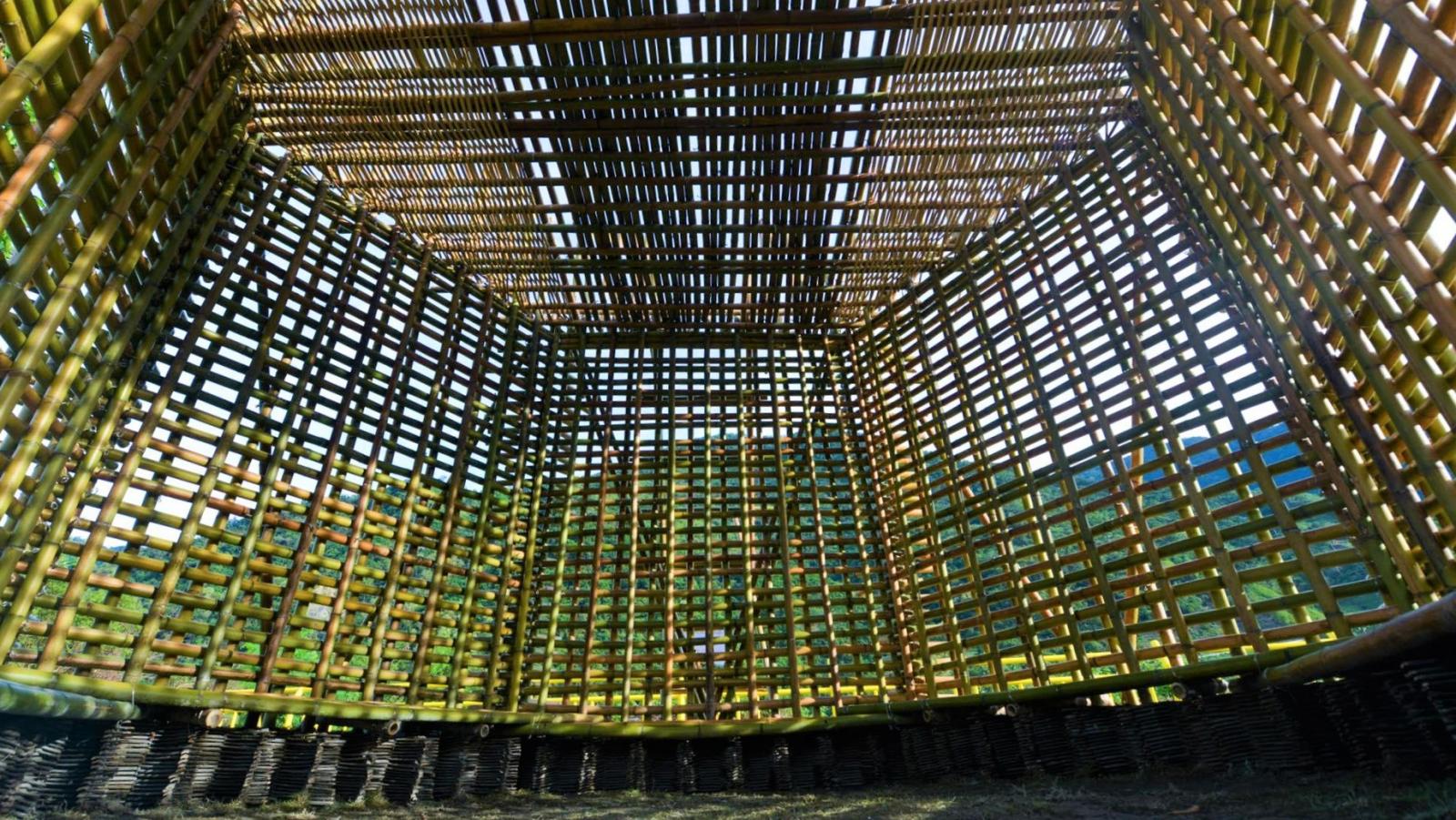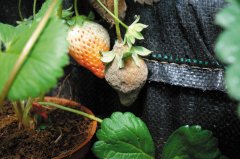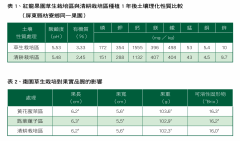Bamboo house: a simple house made of bamboo. Is a house made of bamboo a home?
What is home? How to save it? The green architect will certainly give you an answer other than turning on the air-conditioner. Architects are all realizing the dream of starting a family for others. In view of the promotion of sustainable architecture, he also solemnly said, "Home should not be just a building copied by an architect." "nowadays, people usually live in cement houses. I'll show you the different building materials.
Every household in the Thai community has a fence, and then when it comes to the holidays, they climb over the fence to take risks. Why do Thais go out if they have a home? In response, Thai architect Markus Roselieb explained with a smile: "because these walls are just places copied by architects for shelter from the wind and rain, Thais go out on holidays to find their promised land." "
In response to climate change, the demand for sustainable green buildings has become a trend in recent years. Architects fly to various places to find ideal low-carbon and weather-resistant building materials, and the trend changes as if the heavy rain is over. Bamboo architecture has re-emerged from the forgotten architectural history and finally began to attract attention. Taiwan's first "2018 International Forum on weathering Bamboo Architecture" is to gather architects from all over the world to answer how to use bamboo as a sustainable coexistence between human settlements and the environment to open up a new path.

Bamboo is not enough to start a family because people are afraid of being regarded as poor.
Even though bamboo architecture has been proved to be affordable, sturdy and malleable by the technology of countries such as Taiwan and Singapore, the road to being used as a sustainable residence by the world is still rugged. Compared with steel and cement, bamboo is naturally associated with backwardness. Even if it is an internationally renowned green architect, Markus Roselieb, the founder of CLC, still has to face people's prejudice against building materials.
Bamboo as a new building material, architects have to provide quite a lot of data and research to prove that bamboo complies with building and safety codes and can resist earthquake and shaking before anyone is willing to build it; but after it is proved and built, even if it is a social housing, the poor will still live in the house of concrete and steel next to the bamboo building because they are afraid of being regarded as poor. "
The bamboo gymnasium built by Markus Roselieb for Thailand International Green Primary School Panyaden School won the World Architecture Award (World Architecture News Awards 2018) in 2018. However, he still cruelly shared that it is very difficult to build bamboo architecture schools in Thailand, and people have an unadvanced and uncivilized prejudice against bamboo, especially in the buildings of education and government units. people prefer the cold concrete buildings in the city in stereotype, so they refuse to use natural building materials.
"always wait until the building is completed, the owners will rest assured and happy to invite relatives and friends to the house; always wait until the construction, the government units can believe that the bamboo building is also in line with the safety code, but also anti-seismic and anti-shaking, before giving us construction permission. "Markus Roselieb said so.
Even if he is an internationally renowned green architect, Markus Roselieb, the founder of CLC, still has to face people's prejudice against building materials. (photography / Lin Suyu)
In the face of the many prejudices of bamboo architecture, Markus Roselieb stressed that this is the result of our imagination of civilization giving up nature and tradition, believing that civilization must keep a distance from nature and even dominate nature, but only think of nature after the pollution of civilization. Sustainable bamboo is also in this contradiction, because its renewable characteristics are dominated by environmental protection issues, or because its traditional image is limited to the countryside, but in the sustainable development of bamboo architecture, it should be affirmed and recognized as a whole of building materials and construction laws. not part of the function.
He believes that in order for bamboo to be widely used in building materials, it is necessary to put more emphasis on its functions, aesthetics and other architectural abilities, so that it can compete directly with the mainstream reinforced concrete. In addition, it is necessary to break the association between bamboo architecture and rural weakness. Bamboo architecture should start from the city and subvert the impression of poverty, so as to make people willing to recognize and attach importance to bamboo architecture.
When we are liberated from labor, the concept of sustainability is changed.
If the purpose of sustainable construction is to protect the whole family and their families, how should we view the passive contribution of the natural environment?
The cross-media art creator La Heizi Dariff (Ami) uses the concept of Ami "home" to explore the cultural significance of sustainable architecture in Taiwan. Starting with the relationship between clothing and the body in tribal life, he describes clothes as the home of the body, and the manual process of collecting, drying and weaving a traditional piece of clothing takes time and effort, so every piece of clothing is the lifetime of the aborigines. Aborigines and these creations are integrated and inseparable.
"if you think that creation has nothing to do with you, then you are even less likely to talk about nature. La Heizi Dariff cited the cultural significance of Ami "standing" to explain that it is taken from nature and enables people to "stand" on the land. Home is a system that enables the collective to stand and form a home. The person standing inside is related to the environment that stands outside it-- home, man and nature are an organism, and take the time to go deep into nature to find materials. Only by building a home can we continue the concept and knowledge of home.
Home, man and nature are an organism. It takes time to go deep into nature in order to continue the concept and knowledge of home. (photo courtesy of / sunspot Dariff)
"liberating from labor seems easy and beautiful, and the organic connection between man and natural resources is broken. However, such a life imagination is difficult to accept the life scene and natural care made up of bamboo, wood, and rattan. "
Varig Tinaway, the creator of weaving technology, said that not only bamboo, but also natural resources such as slate, rattan and Reed are used in Taiwan's traditional architecture, and the weaving, stacking and other creation techniques developed according to the characteristics of the materials are no less inferior. He smiles and shares that the aboriginal traditional stone house is a spatial structure made up of plane stacks, which is the same concept as 3D printing. And combined with weaving technology, it can also form a solid three-dimensional structure by stacking hexagonal through lighter materials such as bamboo.
When it comes to sustainable architecture, Varig Tinaway believes that the sustainability of aboriginal traditional architecture does not mean that the home will stand after it is built, but that even if it is blown down by a typhoon and moves a little bit, people will still be able to pick up the wreckage and draw materials from nature, strengthening and stabilizing it again and again. Only in this process of personal labor will we become familiar with the application of natural resources, cherish and inherit this "home", including environment and culture.
"from the traditional response to modern times, the material itself has not changed," says Rahezi Dariff. "We certainly hope that culture can continue to pass on, but the high labor and time costs of natural materials education are considered inefficient. This makes the distance between people and materials farther and farther away. "
Chen Yuping, director of the Space Mother tongue Foundation, hosted the round-table conversation.
Just as Chen Yuping, director of the Space Mother tongue Foundation, curator of the 2018 International weathering Bamboo Architecture Forum, concluded: "in order to promote, it is easy for us to limit these problems to the possibility and function of the material itself. Even aesthetics symbolizes and functionalizes culture and tradition; the reduced connection between people and materials and architecture is a strong and complex projection. "
"this is the loss of people's organic imagination of the integration of environment and culture under the change of life style, and it is also the challenge of sustainable design in the future. "
- Prev

Application of Biopesticide: what is yeast? The function and efficacy of Biopesticide yeast
Yeast has been used in food fermentation industry for thousands of years. By selecting and domesticating bacteria, it can be used not only to produce beer and all kinds of wine, but also to ferment bread and steamed bread. In addition, the potential of research and development of plant disease control is booming in recent years.
- Next

Grass cultivation: grass cultivation increases soil aeration porosity and organic matter in soil.
Grass cultivation has many advantages, such as improving soil environment and maintaining orchard ecology. after it is popularized to farmers, many examples prove the benefits of grass cultivation. However, before choosing the method of grass cultivation, it is suggested that the farmland should be evaluated in many ways and the suitable grass cultivation should be selected.
Related
- A one-day flower show brings 130 million yuan in orders! Nanhai, this Phalaenopsis exhibition is amazing
- What do the flower language and meaning of Lutheran tree mean? Precautions for planting Lutheran tree
- Encounter Chaoshan Kongfu tea, not without this cup of Phoenix single clump
- The durian market in Vietnam and Thailand is flooded. The price of imported durian has plummeted by 30-40% in a month.
- Shanghai solved the problem of local vegetable supply by planting 80,000 mu of green leafy vegetables.
- Wageningen University has become the best agricultural university in the world for the seventh time in a row.
- The strongest export season of South African grapes is full of challenges, with exports to Russia falling sharply by 21%.
- Sri Lanka is on the verge of bankruptcy, "Tea for debt" Organic Agriculture Revolution aggravates the Food crisis?
- Turning waste into earthworm manure and worm manure into organic fertilizer-A new choice for auxiliary farming
- Organic rice growers shoulder the responsibility of nurturing agricultural talents! Yinchuan Sustainable Farm with Organic Life Camp

